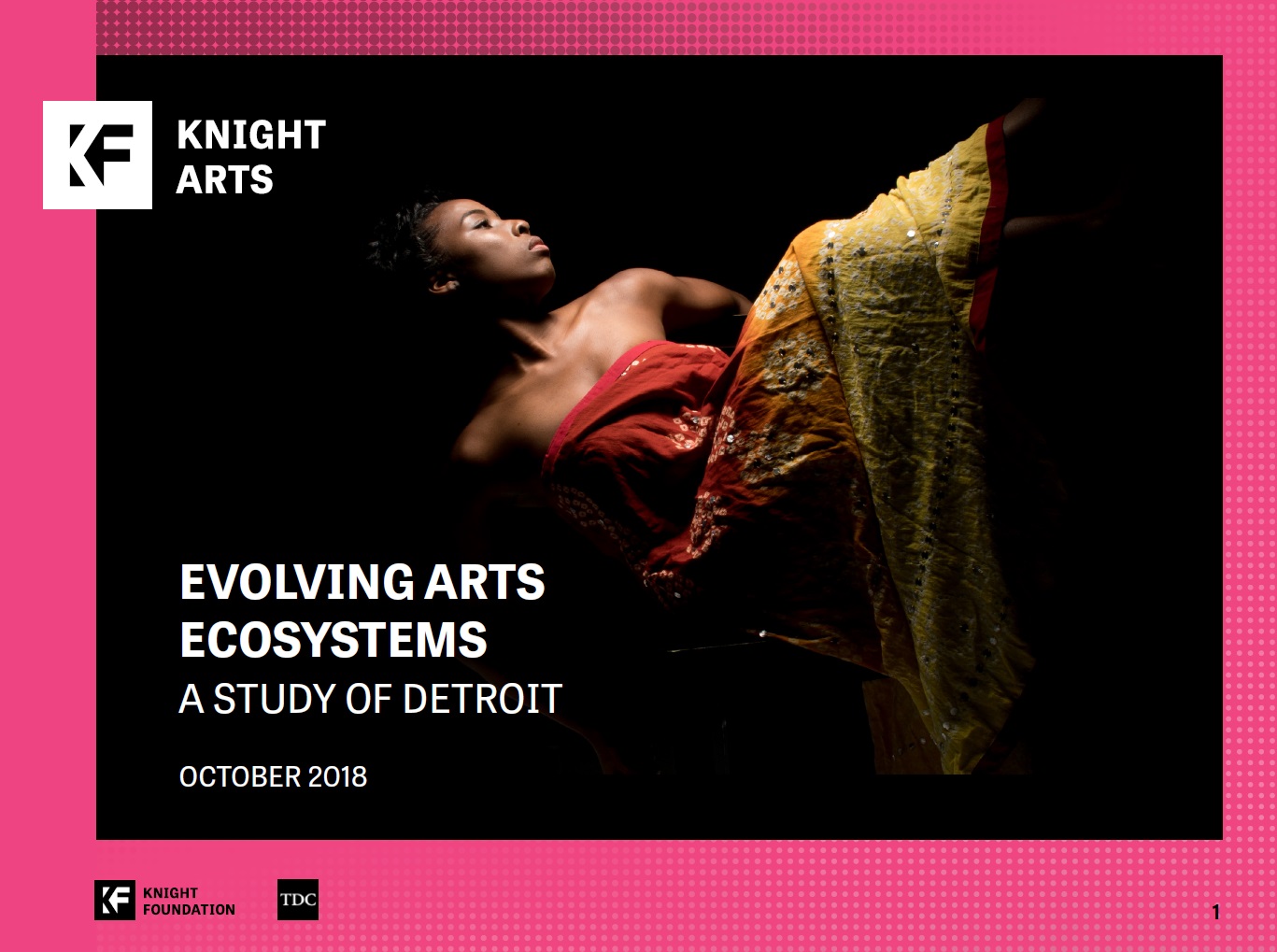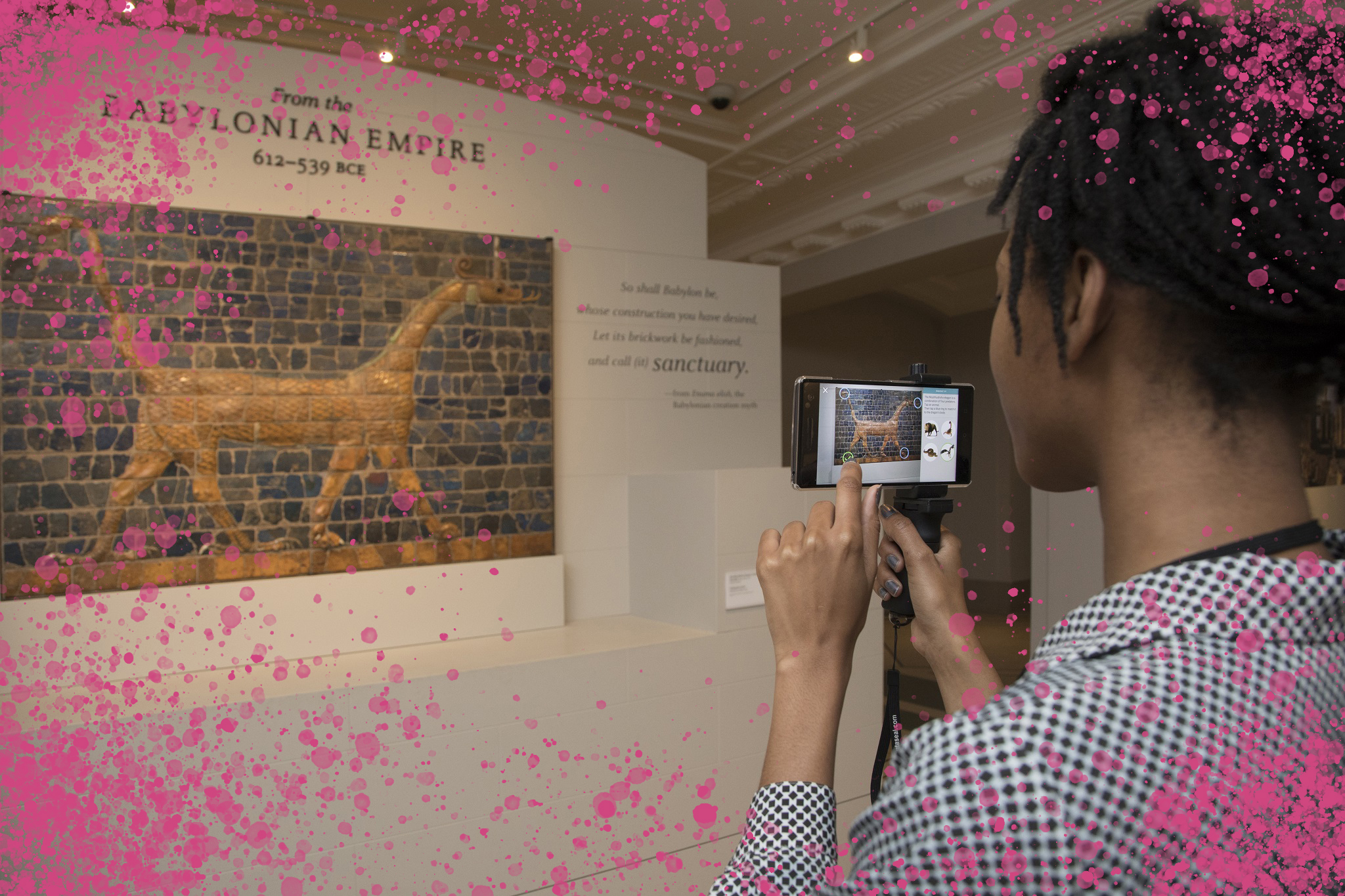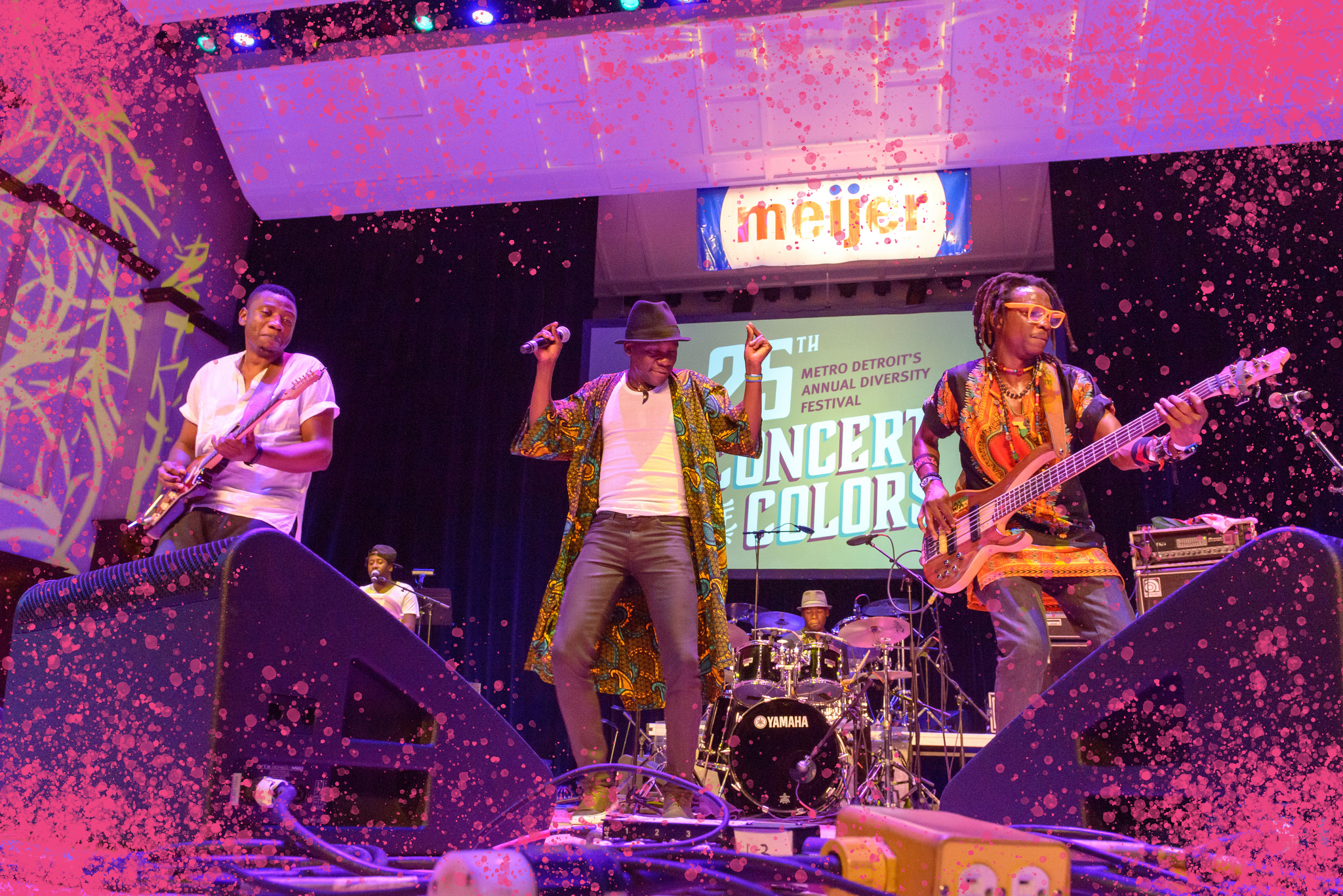The report, “Evolving Arts Ecosystems: A Study of Detroit,” assesses how the Detroit arts ecosystem has evolved over the last decade.
On Oct. 31, 2018, Knight Foundation announced a $20 million investment to strengthen the arts in Detroit. Learn more about the announcement here.
Summary
Knight Foundation believes that the arts play a critical role in connecting people to the places where they live. To concentrate its impact, the foundation has focused its funding in specific communities—especially Detroit, a city long known for its artistic and cultural vibrancy.
The Great Recession wrought significant damage in Detroit, exacerbating economic fragility that had been decades in the making. The arts were not exempt from this pain. Contributions and revenue plunged for even marquee cultural institutions. Yet the city came together around the arts. In what has been called the “Grand Bargain,” philanthropic and public capital was deployed to help the city move quickly through bankruptcy, rescuing the collection of the Detroit Institute of Arts from the auction block in the process.
In light of these developments, Knight wanted to understand how the arts ecosystem in Detroit has evolved over the past decade. The foundation commissioned this study with TDC, a cultural sector research and consulting firm, to determine whether the arts have in fact become more accessible and ubiquitous in these communities. The study sought to address the following key questions:
- How has Detroit’s arts ecosystem (organizations, audiences, funding, creative industries) changed?
- What are the continuing gaps in the system?
- What has been Knight’s role?
This report provides a snapshot of key indicators reflecting how the arts in Detroit evolved over a decade. The analysis synthesized several secondary data sources and interviews with key stakeholders in the community.
Key Findings
The study suggests that the arts have played a pivotal role in the resilience of Detroit over the past decade:
- The Arts Have Contributed to the City’s Identity: In the face of declines in Detroit’s population and economy, the arts have forged a common identity, burnishing the city’s image as a bustling hive of do-it-yourself creative activity. As summed up by one local leader: “When Detroit was at its lowest point, the arts doubled down on community investment when everyone else was gone.”
- The Arts Have Grown More Vibrant:There has been significant growth in artistic activity and participation. Arts attendance has risen dramatically over the past decade in both the city and Wayne County. This growth is also reflected in the spending levels of arts organizations in Detroit, which declined during the recession but rebounded by 2015 to surpass 2005 levels. Stakeholders are seeing, as one put it, “a growing number of galleries, arts alliances, artists working in group shows, diversity in the kinds of art being shown. There is just more!”
- The Arts Have Sparked Opportunity: Furthermore, arts and culture have served to bind people to the city and have created professional opportunities. During a period when Detroit experienced a net loss in jobs, employment grew in cultural industries. People were quick to point out, for example, that “the creative aspect of the city has attracted businesses—hip clothing stores, wine tasting spots.”
Download the full report here.
Image (top): Erada Ally’s Gazebo (Design Core District). Knight Foundation is giving new funding to the Design Core Detroit via the College for Creative Studies to create the annual Detroit City of Design Competition. Courtesy of Design Core District. Color manipulations added by Knight Foundation.
- Evolving Arts Ecosystems – A Study of DetroitExternal Content / Website



